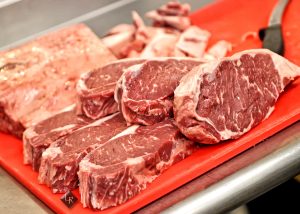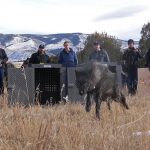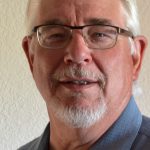Minnie

Audrey Powles
When I was a 12-year old boy, there was an old relique of farming from years ago that sat out in the tree row. An F-11 Farmhand loader was attached to a tractor that had played a huge part in building the ranch that I called home. That tractor was a Minneapolis-Moline Model U. It wasn’t the first tractor that my grandpa had owned, but it was the one that expanded the operation. Hours upon hours were spent looking out across the Colorado prairie from the seat of that tractor as he pulled a four-row planter across the fields. That tractor had been rebuilt more than once as it was the workhorse for the place. Unlike the tractors of today that are built with all the comforts of a luxury automobile and more gears than letters in the alphabet, that old Minnie had four gears that had to be changed with a hand clutch. The seat was made from wrought iron and was attached to the tractor with a bar and a spring that offered only a little cushion from the constant jostling as they cultivated pinto beans, milo and corn.
Attached to the fenders there was a toolbox to make repairs in the field, and on the opposite side was another metal seat that Grandpa had bolted there for Grandma to ride along and operate the hand controls on whatever piece of equipment they were pulling at the time. A glass jar wrapped in burlap and then dunked in the stock water tank served as the modern-day thermos for Grandpa as he farmed. He carried extra gasoline with him in a cream can so that he could farm all day long. Grandpa once told me that he farmed all day until he had lost a head gasket. He took the tractor home, pulled the heads off that night in the shop, replaced the gaskets, and was back in the fields by sunrise.
They used Minnie to pack silage in bunker pits when my mom was in high school and finally retired it from a life of hard labor sometime in the 80s. Bigger tractors and larger equipment had put Minnie out of a job. The trees had grown up through the loader, and water had gotten into the block in the 30 some years that the tractor sat silently in the tree row. The faded Harvest Gold paint and crimson wheels were starting to turn to a shade of rust when we finally pulled it out of its grave. An uncle had a tractor that was the same model, and with the acquisition of it, I was able to turn two tractors into one. I filled the cylinders with diesel and worked for days until I was finally able to free up the motor.
Restoring Minnie became my goal. My dad, grandpa, and many other uncles that had knowledge of that old beast came to help get Minnie up and going again. I learned the basics of mechanics from those men. We pulled heads, honed cylinders, fixed wiring, rebuilt the carburetor, and rebuilt that tractor from the ground up all within the walls of our shop. It took 1,405 man hours to do and 1,405 hours of memories, lessons learned, stories shared and work that produced a product that looked like it rolled off the showroom floor. I took Minnie to the fair as a 4-H project and ended up making the evening news with Minnie when it went to the state fair later that summer.
I look back on the time that was spent rebuilding that tractor, what it did for our family operation and how improvements in technology had retired it from service. There were no computers to drive Minnie, no sensors to go out that had to be reset by a technician, and the only way to keep the row straight was to make sure you drove towards the right fence post on the opposite side of the field. Times have changed, but sometimes not for the better. I look back on that Minnie and think of a time when farmers were valued by those who didn’t work the land. It scares me to think that cities use tax dollars to promote products and lifestyle choices that force farmers out of business. That’s all for this time, thank a farmer if you ate today, and keep tabs on your side of the barbed wire. God bless.
Meinzer is a fourth-generation rancher raised on the southeastern plains of Colorado. He and his family live and ranch in Oshkosh, Neb.









